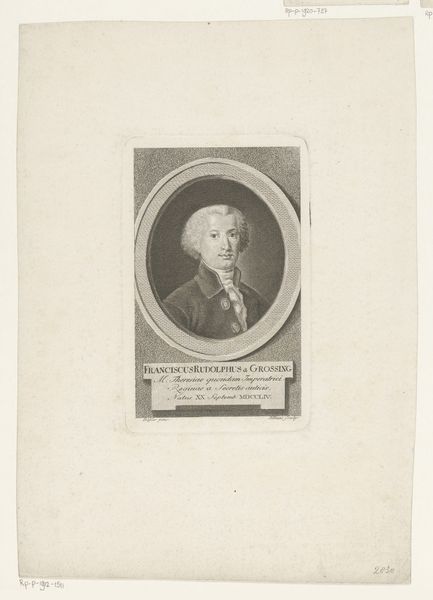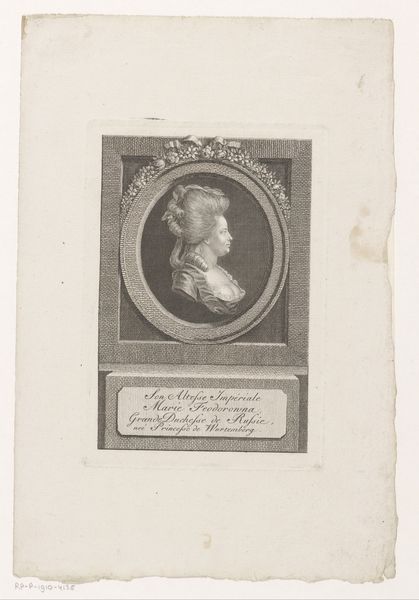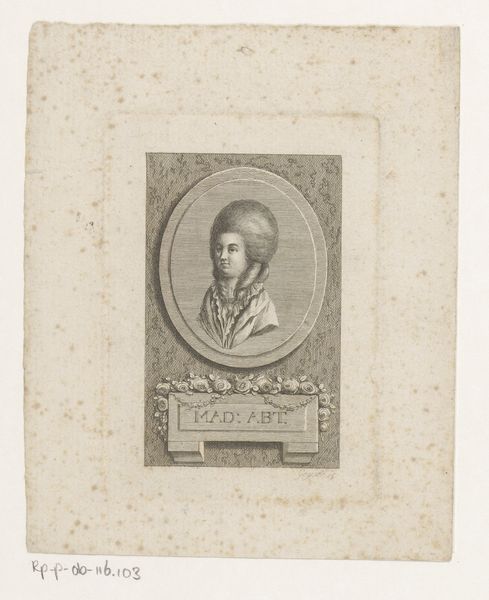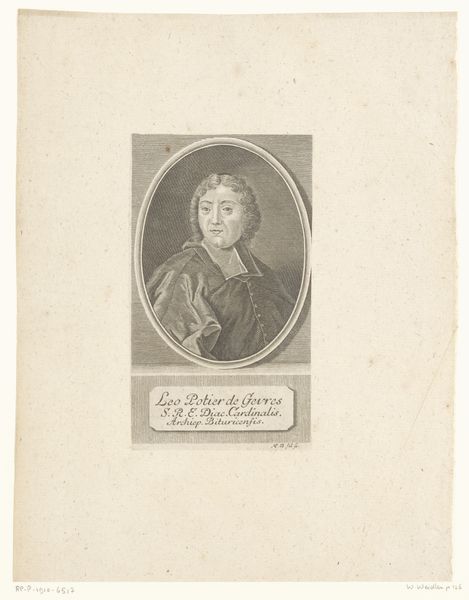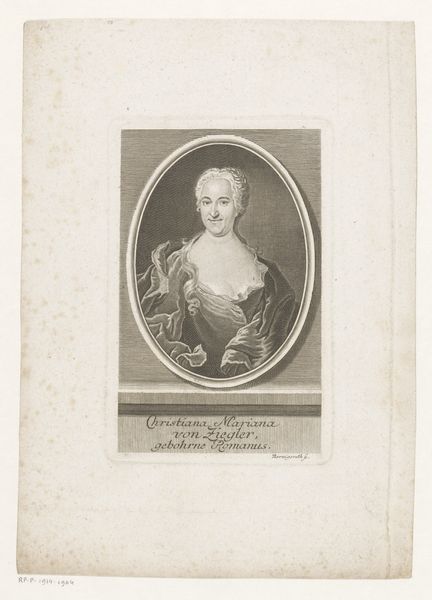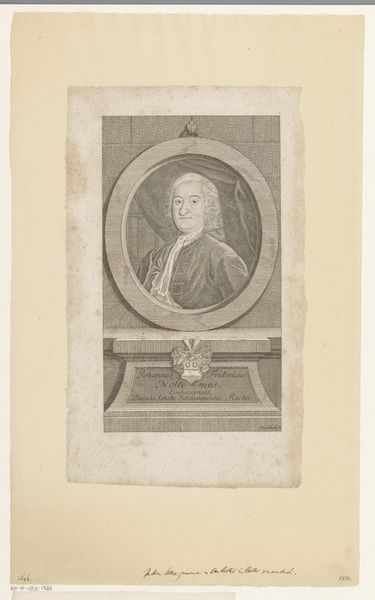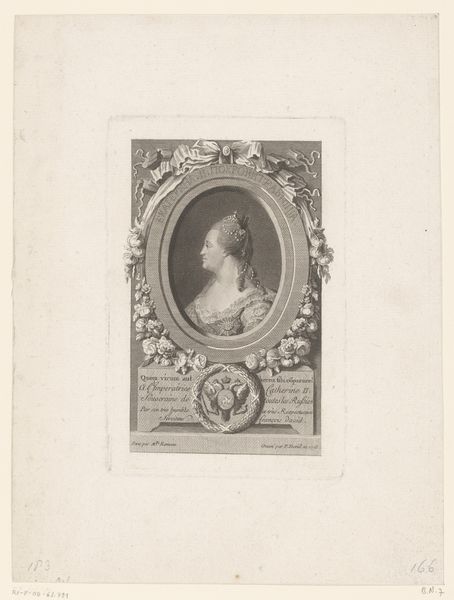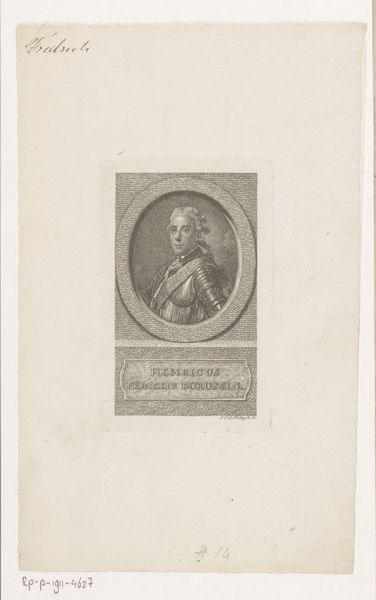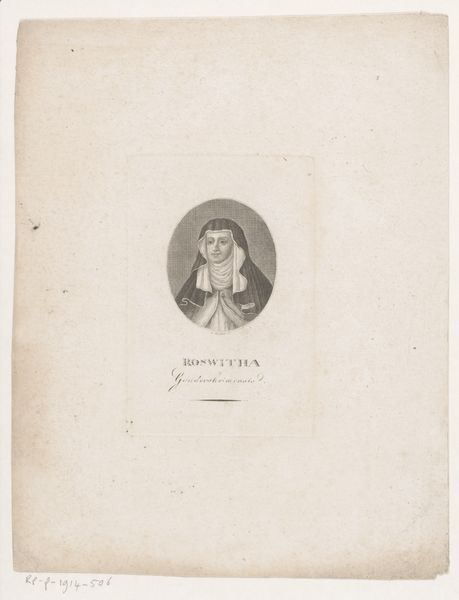
Portret van August Willem, prins van Pruisen 1732 - 1775
gustavandreas16921775wolfgang
Rijksmuseum
print, engraving
portrait
baroque
history-painting
engraving
Dimensions: height 105 mm, width 63 mm
Copyright: Rijks Museum: Open Domain
Editor: Here we have "Portret van August Willem, prins van Pruisen," created sometime between 1732 and 1775 by Gustav Andreas Wolfgang. It's a baroque print, an engraving, displayed here at the Rijksmuseum. There's a formality and a deliberate, constructed nature to it that makes me wonder, what historical context shaped this kind of imagery? Curator: That formality, that "constructed nature" as you say, speaks volumes about the cultural memory it embodies. Look at the oval frame – an ancient symbol of cycles, eternity, rebirth, enclosing him, setting him apart, almost as a sacred object, or a familial reliquary. Notice how this intimate portrait is placed on a pedestal inscribed with his title. Does that juxtaposition suggest anything to you about how August Wilhelm, and Prussian royalty in general, wished to be perceived? Editor: It feels a little contradictory. Intimate but still elevated and separated from everyday life... like an accessible god. I see that August Wilhelm was a prince, so I suppose being perceived as separate but benevolent was the image he wanted to project? Curator: Precisely. Think about the rise of Prussia during this period. This isn’t merely a portrait; it’s a carefully constructed statement of power and lineage. Every line, every curve in the engraving, reinforces this. He isn't just August Wilhelm; he is *August Wilhelm, Second Prince of Prussia*. How do you think this portrait would function within, say, the family’s estate or political circles? Editor: It becomes like propaganda almost? A way to continuously remind people of his power and authority. That’s something I hadn't considered before, I thought it was only a pretty portrait! Curator: It *is* a pretty portrait. But portraits of the time are seldom just innocent representations. They're cultural documents laden with intention and meaning. Editor: Thank you. I’m beginning to see how even the smallest details in art like this speak to larger cultural narratives.
Comments
No comments
Be the first to comment and join the conversation on the ultimate creative platform.
